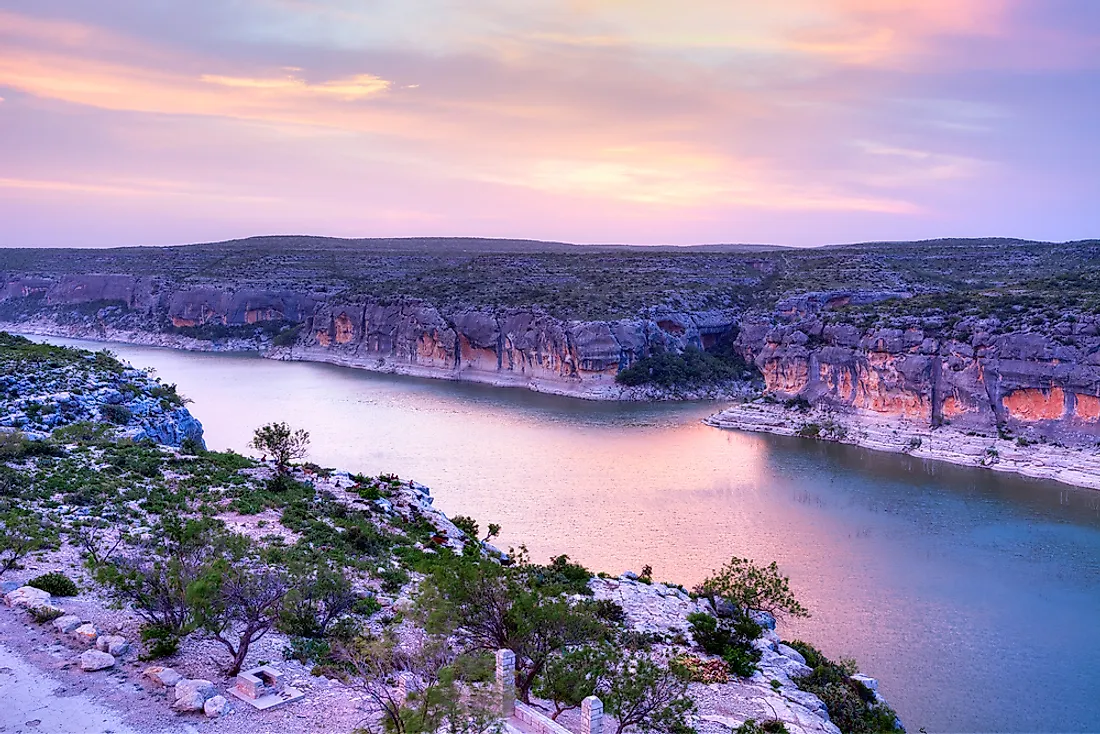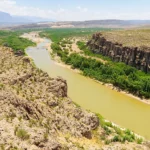Get ready to dive into the captivating world of Texas rivers! From the mighty Rio Grande to hidden spring-fed streams, Texas boasts a surprisingly diverse network of waterways. This journey will explore the history, ecology, and cultural significance of these liquid lifelines, revealing the hidden wonders that flow through the heart of Texas.
Rivers in Texas: A Liquid Lifeline
While Texas might be known for its wide-open spaces and arid plains, the Lone Star State possesses a secret: over 3,700 rivers and 191,000 miles of flowing water. These rivers are more than just picturesque landscapes; they are the lifeblood of Texas, shaping its land, nurturing its wildlife, and influencing its history.
The Rio Grande: A River of Legends
The Rio Grande, Texas’s longest river, stretches over 1,250 miles, marking the border between Texas and Mexico. This iconic river, originating in the Colorado Rockies, winds its way through the southwest before reaching the Gulf of Mexico. For centuries, the Rio Grande has provided vital resources for people on both sides of its banks, standing as a silent witness to history.
Rivers for Fun and Relaxation
Beyond their historical significance, Texas rivers also offer unparalleled opportunities for recreation. The Guadalupe River, known for its gentle currents, is a haven for tubing enthusiasts seeking respite from the Texas heat. Birdwatchers flock to the Nueces River, kayaking through tranquil waters in search of rare and beautiful species.
The Comal River: Small but Mighty
Don’t underestimate the Comal River, the shortest river in Texas, spanning a mere 2.5 miles. This spring-fed waterway, nestled in New Braunfels, captivates visitors with its crystal-clear waters, perfect for swimming, snorkeling, and basking in the beauty of the Texas Hill Country. The Comal River also provides a critical habitat for unique species, like the endangered fountain darter, highlighting the ecological significance of even the smallest waterways.
Protecting Our Liquid Treasures
As the population of Texas continues to grow, the importance of protecting its rivers becomes increasingly critical. Conservation efforts, from flood prevention to ensuring clean water access, are vital for maintaining the health and vitality of these precious waterways for future generations.
Rivers: The Storytellers of Texas
Texas rivers hold within their currents centuries of stories. Native American tribes relied on these waterways for sustenance, transportation, and inspiration, their cultures intertwined with the rhythms of the rivers. European explorers later navigated these same waters, their journeys shaping the course of Texas history. Today, these rivers continue to connect communities, support agriculture, and offer endless opportunities for exploration and recreation.
What Are the Longest Rivers in Texas?
Texas boasts an impressive array of rivers, but some stand out for their sheer size and impact. These rivers, flowing for hundreds of miles, have shaped the landscape and history of the Lone Star State.
The Rio Grande: More Than Just a River
Stretching an impressive 1,896 miles, the Rio Grande is more than just a river; it’s a border, a landmark, and a testament to the power of nature. This iconic waterway, originating in the Colorado Rockies, journeys through the Southwest before finally reaching the Gulf of Mexico, showcasing the interconnectedness of the American landscape.
The Brazos River: The Heart of Texas
The Brazos River, flowing for 1,280 miles, is a vital resource for Central Texas, providing water for agriculture and sustaining diverse ecosystems. The Brazos exemplifies the crucial role rivers play in supporting Texas’s economy and environment.
The Red River: Southern Charm, River Style
Meandering for 766 miles from the Texas Panhandle to the Mississippi River, the Red River embodies Southern charm. This river offers a haven for outdoor enthusiasts, attracting visitors with opportunities for fishing, boating, and immersing oneself in the beauty of nature.
Don’t Forget the Little Guys (Well, Not So Little)
Beyond the Rio Grande, Brazos, and Red River, Texas boasts a network of other significant rivers, each with its own story to tell. The Pecos River, the Colorado River (not to be confused with the river that gives rise to the Rio Grande), and the Canadian River all exceed 900 miles in length, demonstrating the vastness and diversity of Texas’s river systems.
Some Food for Thought
With 15 major rivers and over 3,700 named streams, Texas’s waterways support diverse ecosystems, shaping the land and providing invaluable resources.
Exploring Texas River Systems: Basins and Tributaries
Texas’s rivers are not isolated entities but rather interconnected components of larger systems, with fifteen major river basins collecting and channeling water across the state. Each basin, like a giant bathtub, possesses unique characteristics, influencing the flow and ecology of its rivers.
River Road Trip, Anyone?
Imagine embarking on a road trip through Texas, following the paths of its rivers. Starting in the north, you might traverse the Red River Basin, where the landscape stretches endlessly. Heading south, the scenery transforms as you encounter the Brazos River, winding through rolling hills. Continuing your journey, you might reach the coast, where rivers like the San Jacinto meet the Gulf of Mexico, creating a dynamic ecosystem. Each river basin offers a unique glimpse into the diverse landscapes of Texas.
Eight of Texas’s river basins, known as coastal basins, flow into the Gulf of Mexico, creating critical transitions between freshwater and saltwater environments. These basins support a wealth of biodiversity, providing habitat for marine life and contributing to the ecological richness of the Gulf Coast.
Challenges and Choices
The increasing demand for water resources, coupled with the impacts of climate change, presents challenges for managing Texas’s rivers. Droughts and floods pose threats, requiring careful planning and conservation efforts to ensure the long-term health of these vital waterways.
More Than Just Water
Texas rivers are more than just sources of water; they are interwoven with the history, culture, and ecology of the state. From Native American tribes who depended on rivers for survival to modern cities that rely on them for resources, rivers have shaped the identity of Texas.
The Diverse Ecology of Texas Rivers: What Lives in Them?
Beneath the surface of Texas’s rivers lies a vibrant and diverse underwater world. These ecosystems support a fascinating array of species, each playing a crucial role in maintaining the delicate balance of life.
Anglers casting their lines into the water might encounter the sought-after largemouth bass, a testament to the abundance of fish species that call Texas rivers home. Catfish, crappie, and sunfish further contribute to the ecological diversity, showcasing the interconnectedness of life within these waterways.
Beyond the fish, amphibians and reptiles thrive along the riverbanks. Bullfrogs, painted turtles, and water snakes add to the tapestry of life, reminding us of the intricate connections that exist within these ecosystems.
Above the water’s surface, a variety of birds depend on the rivers for survival. Great blue herons, with their patient stance and sharp beaks, demonstrate the delicate balance between predator and prey. Kingfishers, a blur of color, dive for fish, while graceful egrets wade through shallows, their elegant reflections mirroring the beauty of their surroundings.
As researchers continue to explore the depths of Texas rivers, new discoveries are constantly being made. These waterways, teeming with life, remind us of the importance of conservation and the interconnectedness of all living things.













Comments are closed.